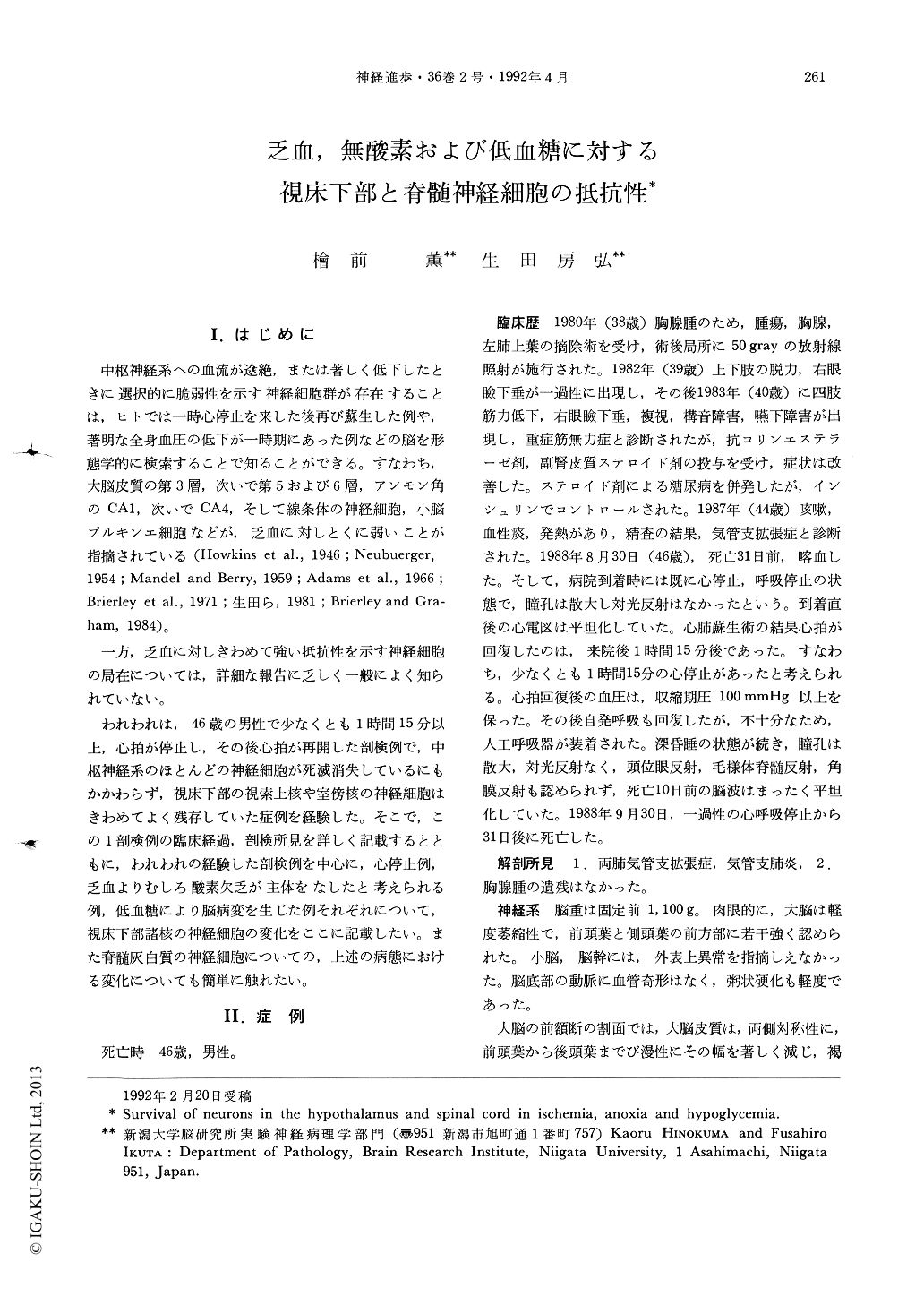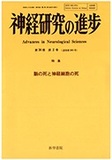Japanese
English
- 有料閲覧
- Abstract 文献概要
- 1ページ目 Look Inside
I.はじめに
中枢神経系への血流が途絶,または著しく低下したときに選択的に脆弱性を示す神経細胞群が存在することは,ヒトでは一時心停止を来した後再び蘇生した例や,著明な全身血圧の低下が一時期にあった例などの脳を形態学的に検索することで知ることができる。すなわち,大脳皮質の第3層,次いで第5および6層,アンモン角のCA1,次いでCA4,そして線条体の神経細胞,小脳プルキンエ細胞などが,乏血に対しとくに弱いことが指摘されている(Howkins et al.,1946;Neubuerger,1954;Mandel and Berry,1959;Adams et al.,1966;Brierley et al.,1971;生田ら,1981;Brierley and Graham,1984)。
一方,乏血に対しきわめて強い抵抗性を示す神経細胞の局在については,詳細な報告に乏しく一般によく知られていない。
It is widely known that the neurons of the central nervous system (CNS) are particularly vulnerable to inadequate blood flow, and that only a few minutes of circulatory arrest induces selective neuronal death in certain areas. However, little attention has been paid to neuronal populations that are markedly resistant to ischemia. We recently autopsied a 46-year-old man who had survived 31 days after cardiac arrest for more than 1 h and 15 min. It was found that neurons in the supraoptic and paraventricular nuclei were exceptionally well preserved in contrast with the almost complete disappearance of other neurons in the CNS (Figs. 1-5). Therefore, we investigated at autopsy neuronal alterations in the hypothalamic nuclei of 7 patients who had suffered cardiac arrest, including the abovementioned patient, 2 patients with anoxic anoxia and 2 with hypoglycemia. In addition, neuronal changes in the spinal cord were examined.

Copyright © 1992, Igaku-Shoin Ltd. All rights reserved.


